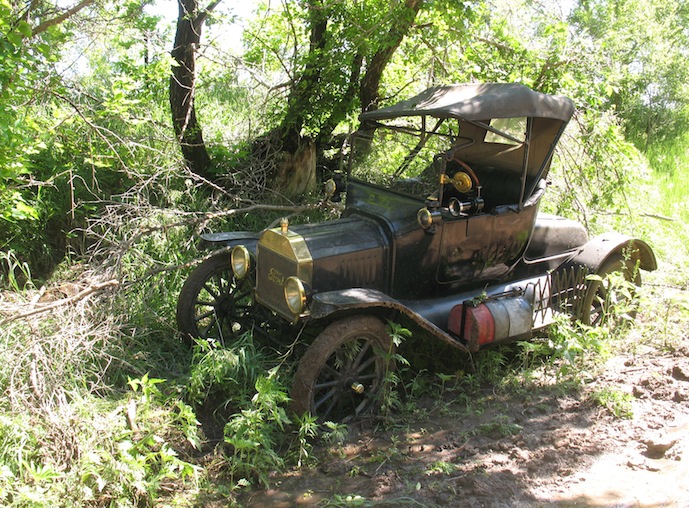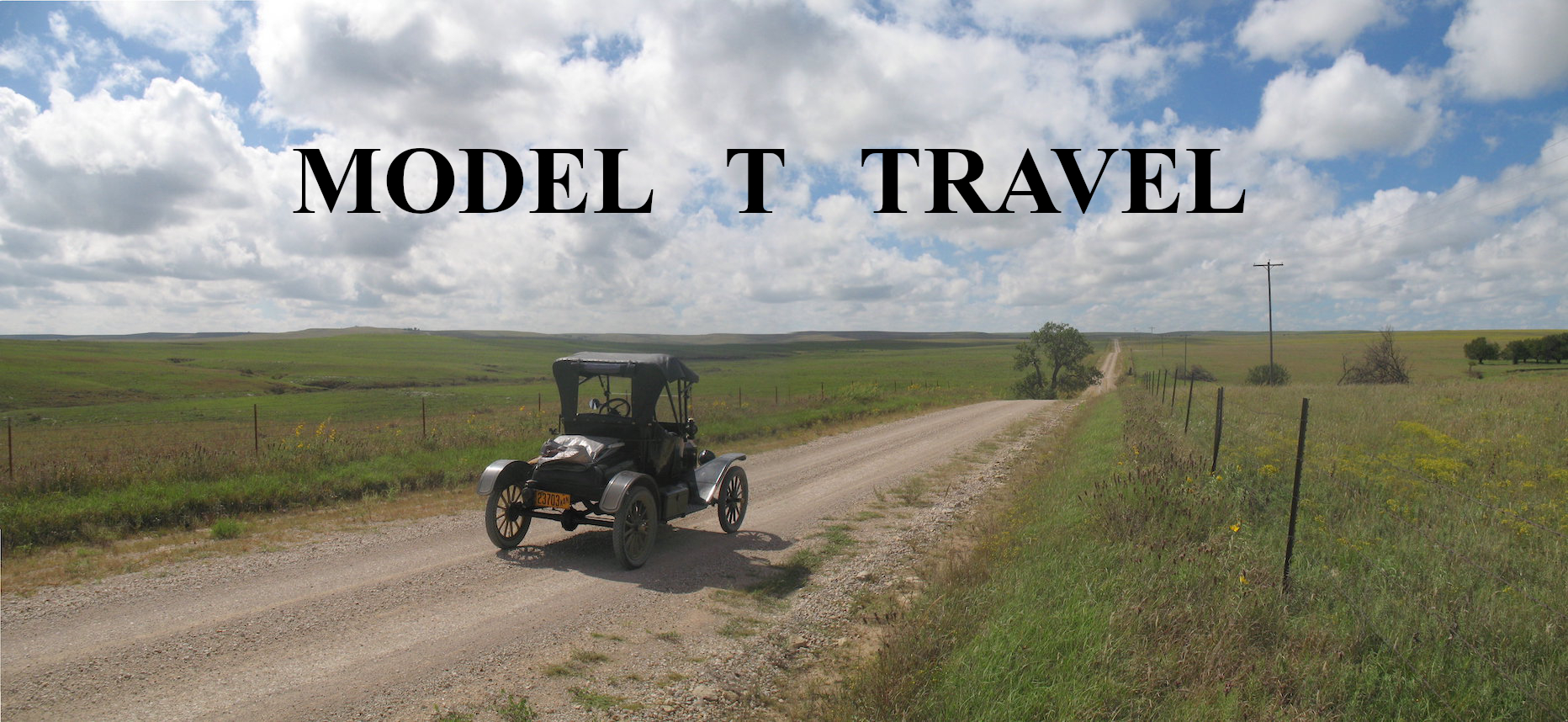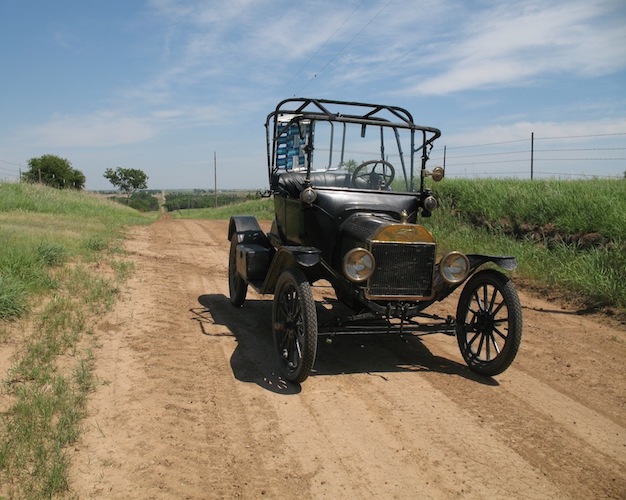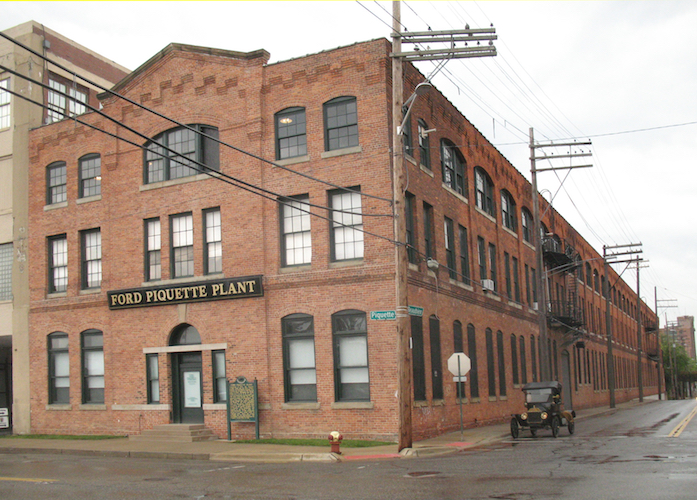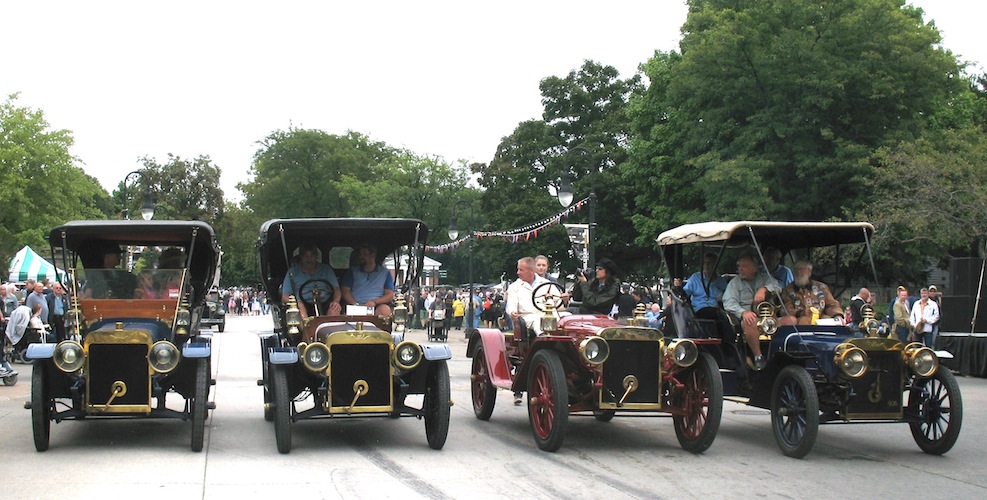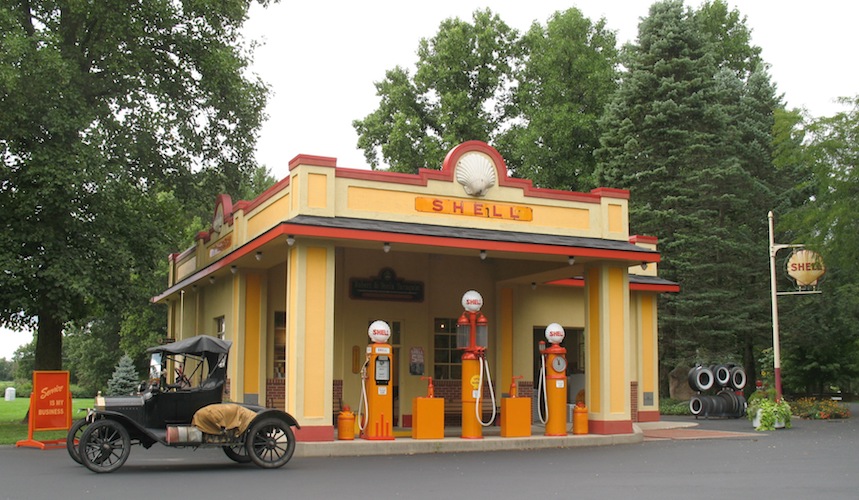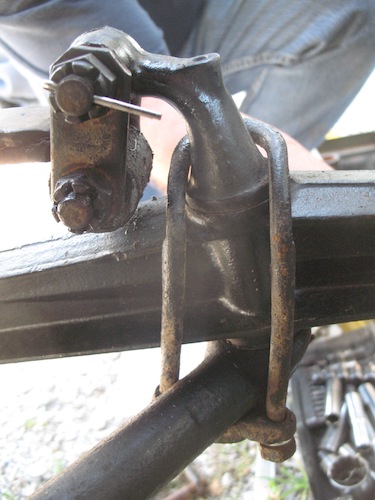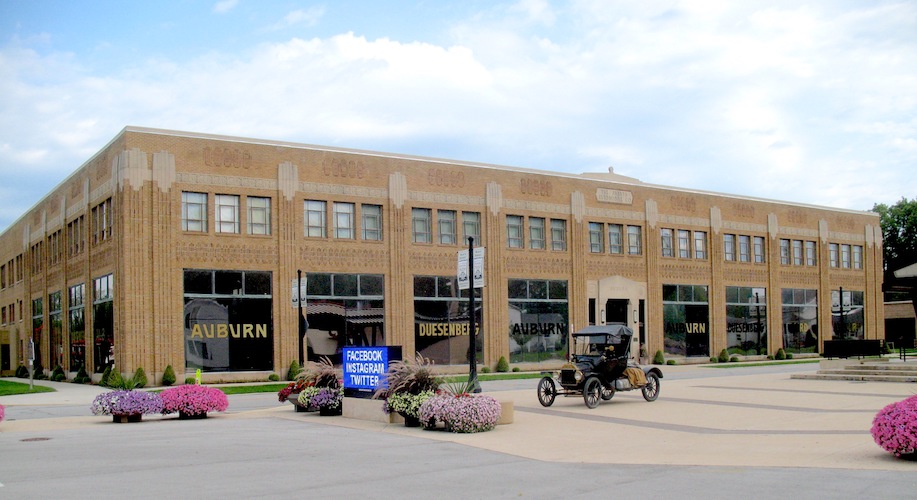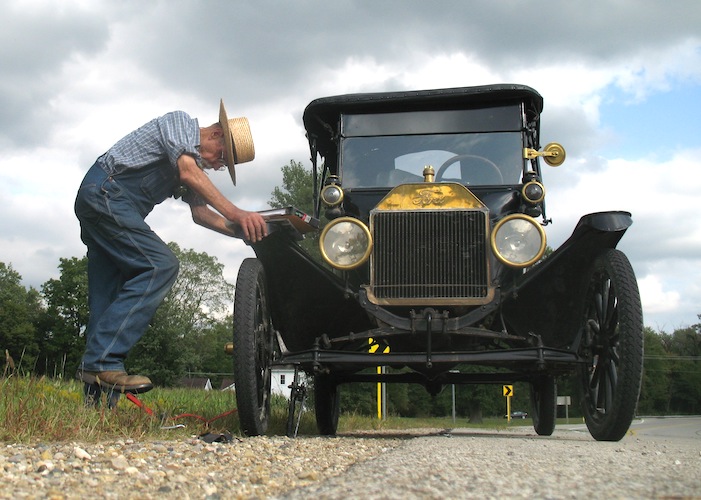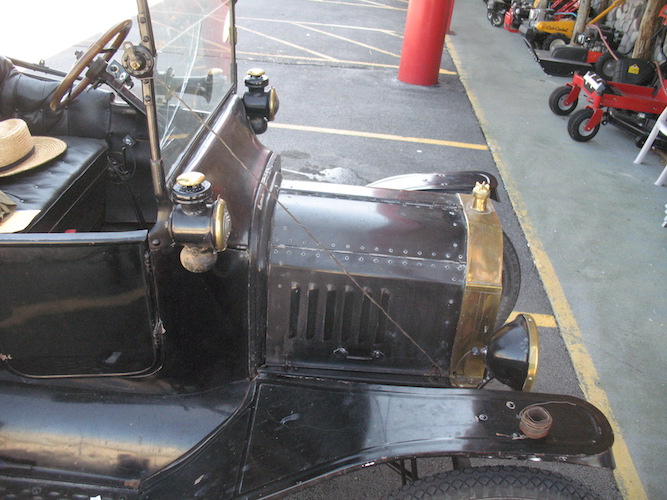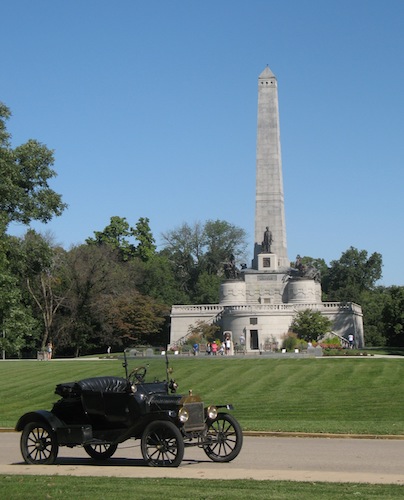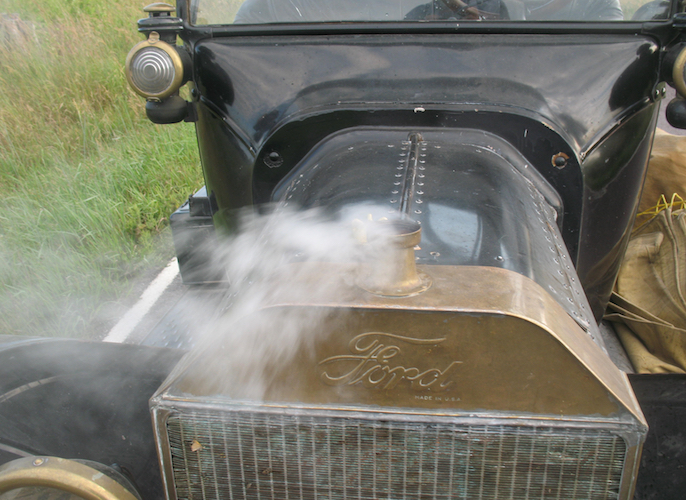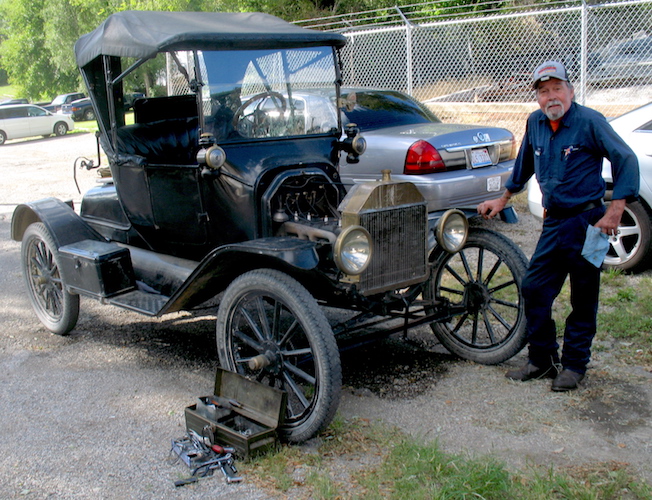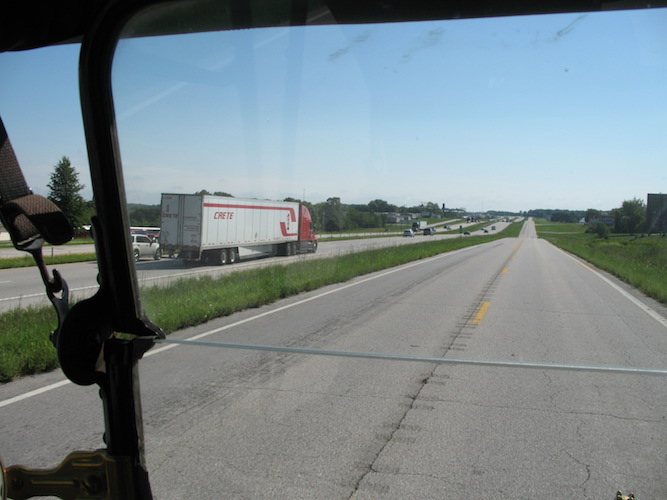The rest of the drive to Dearborn was event-free.
The OCF was a delight as usual until Sunday
afternoon. I was feeling dehydrated and went to buy
a drink. I set my camera on the counter while I paid
for my soda pop, and in my groggy state left it
there while I went and sat down, had my drink, and
recovered. By the time I remembered my camera and
went back for it, it was gone. The thief got not
only the camera, but all the pictures of this trip
from Springfield on that were on it, so I have no
photos of the OCF or the trip home.
Having to get home for a family
reunion, I had no time for sightseeing or visiting
on the way. After leaving Dearborn I got as far as
Clinton before sundown stopped me and I set up camp
behind a clump of trees where I was out of sight.
The next day I left Michigan and went south through
Indiana, arriving at Turkey Run State Park at
sundown. The next morning I was soon in Illinois,
crossing that prairie state’s wide, flat eastern
half. Some people would find a drive like that
boring, but on this beautiful September morning,
watching mile after mile of corn and soybeans and an
occasional distant farm house roll by under a
brilliant blue sky punctuated by little puffy white
clouds, pulled along at a leisurely 35 mph and
listening to the mechanical song of Henry Ford’s
humble little 20 hp engine, I reveled in it. I do
love Model T travel.
That evening I stopped in
Springfield IL again, and the next day crossed the
rest of Illinois and proceeded south and west
through Missouri. Sundown found me at Lebanon, where
I bedded down beside old US 66, now a state highway,
which runs alongside I-44 through much of Missouri.
A US highway or a former US highway that parallels
an interstate is usually great for Model T travel,
as most of the traffic is over on the big road.
The next day, west of
Springfield MO, I experienced my next event.
The farther I went, the rougher the engine ran
and the more it lost power, until the car was
struggling up hills and slowing to a crawl at
the top. Fortunately most of the way across
western Missouri is relatively flat. The sun was
setting as I limped into Carthage. I pulled into
a gas station, left the engine running, and
phoned Mike Bender. “Can you hear this?” I
asked. “Sounds like it’s running on two or three
cylinders,” he replied. Mike drove up from Tulsa
with a trailer in case I needed to haul the car,
but the spare parts he brought contained the
cure for what was ailing my car — a good timer
brush to replace the one I had which was worn
out.
The next day I should have made
it home early in the afternoon, but there was
another event. This one was directly my
fault. I failed to check tire pressure all
around, and about thirty miles from home I was
rounding a curve on a gravel road and suddenly
heard the sound of a bare rim running on the
road. I was prepared for changing a tube, but
not for losing a tire. I walked back along both
sides of the road a couple of times and never
did find where that right front tire went. I
phoned my cousin to come and fetch me, and while
I waited I searched for that tire three or four
more times. I never found it, and we ended up
enlisting a friend with a trailer to haul the
car home.
Have all these events
soured me on travel by Model T? Quite the
opposite. They’re part of the adventure, and
they make me want to learn the lessons they
teach. I’m looking forward to being on the road
again for more Model T travel.
